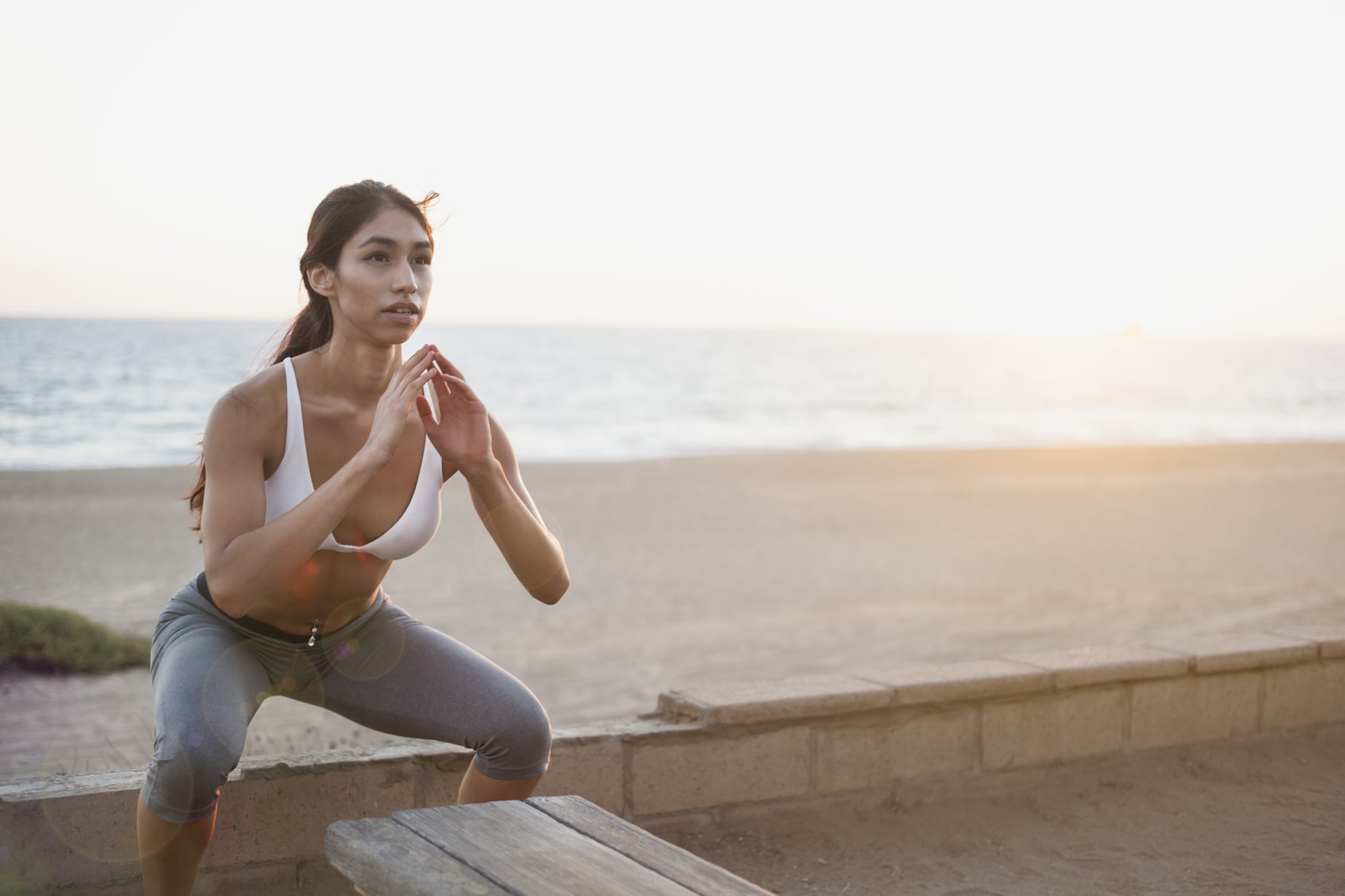Whether you love them or hate them, squats are a staple in most workout routines, and for good reason. But their booty-boosting abilities sometimes come with a side of knee pain that can prevent you from meeting your goals. POPSUGAR spoke to two experts to understand why your knees just never seem to be up for this butt-burning move.
Why Do My Knees Hurt When I Squat?
There are many potential causes of knee discomfort while squatting. But according to Jason Mulvaney, an NASM-certified corrective exercise specialist and performance enhancement specialist, and owner of Ascension Athletics in Dallas, TX, limited ankle and hip mobility are common culprits. “Unfortunately, our lifestyle involves mostly sitting at a desk, which doesn’t help us move in the most optimal way,” Mulvaney told POPSUGAR. He explained that, as our hips and ankles tighten, our natural movement patterns are compromised, and our knees often pay the price.
PJ Shirdan, an NASM-certified personal trainer and founding coach at FightCamp, explained that your body is a system. When there’s an issue with one part, it can negatively affect others. Shirdan said that knee pain while squatting could result from problems with the patellar tendon, anterior tibialis, hamstring, or quadriceps. Other possible culprits include incorrect form while squatting, improper footwear, too much weight, too many reps, or an inadequate warmup.
What Should I Do If I Experience Knee Pain While Squatting?
Both experts agree that checking your form is a must. (Here’s how to squat correctly.) Beyond that, it’s important not to ignore the pain. “People should always listen to their bodies and consult with their physician if knee pain persists,” Shirdan told POPSUGAR.
There are some tricks for more immediate relief as well. If the pain is stemming from tight calves, Mulvaney recommends putting some plates underneath your heels when squatting. He also suggested placing a box or bench underneath you to shorten your range of motion. Shirdan said to make sure you’re warming up properly (dynamic exercises are key), and that you’re wearing appropriate footwear for strength training. He added that you may also need to decrease the weight you’re squatting.
Quick fixes aside, preventing knee pain for the long run takes a more concerted and holistic effort. “You’ll need to keep up with your mobility and make sure you are on an exercise program that trains commonly neglected muscles such as the gluteus medius,” Mulvaney explained.
